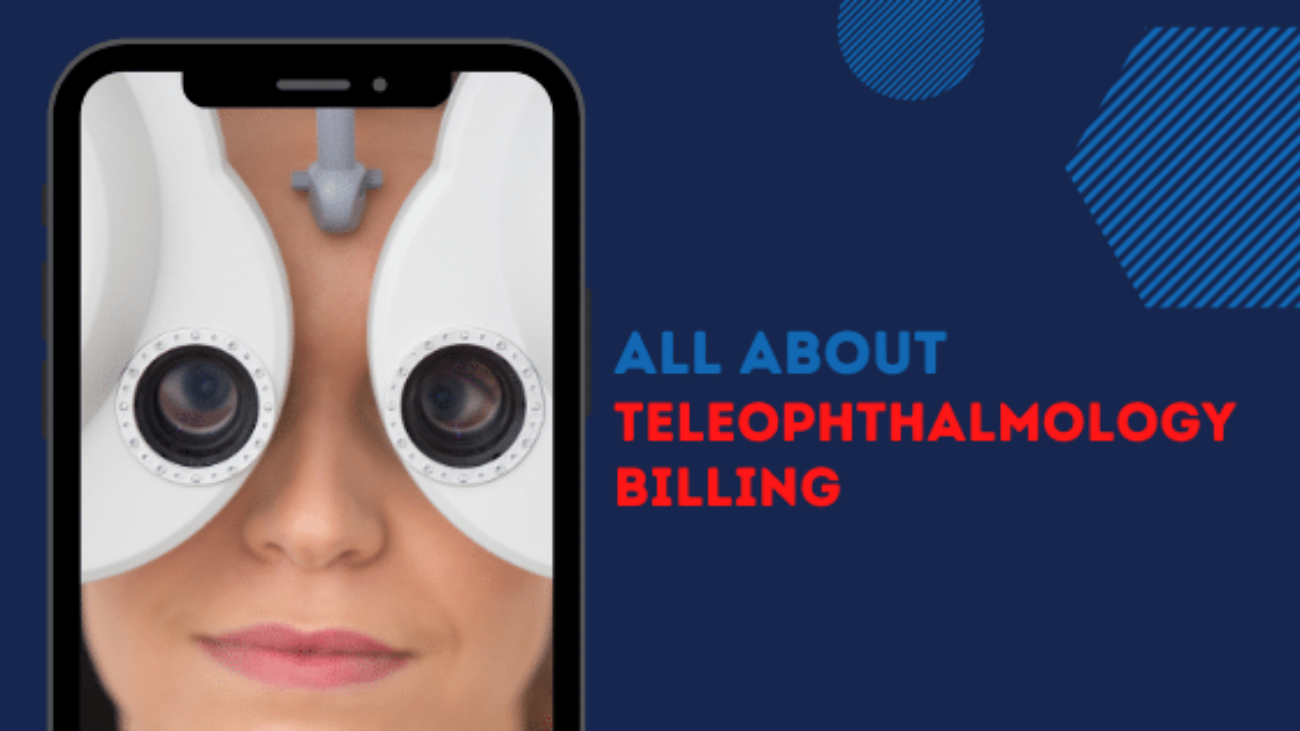Do you accept that telemedicine has transformed medical practices all over the world after pandemic? The same might continue in the later years and influence the future medical practices in delivering services that includes teleophthalmology also. Teleophthalmology billing has various challenges like delayed reimbursements and potential liabilities etc.
As teleophthalmology uses electronic communication to exchange medical information remote. Teleophthalmology billing also plays a prominent role in bringing on time revenue reimbursements for healthcare professionals. The services for teleophthalmology include screening and diagnosing patients, chronic disease management and remote monitoring.
In teleophthalmology, digital fundus photography is the best as it provides all of it to telemedicine. The camera can be placed anywhere in the healthcare professionals’ office and can be operated by the staff. These captured images are transmitted for interpretation. But there are few legal issues in screening retinal diseases using fundus photography.
Revenue payments for Teleophthalmology billing:
- Although teleophthalmology reimbursements rates vary between insurance companies, most of the commercial insurance companies and Medicaid decides for a reimbursement only if they find the telemedicine services real with video visits.
- American Telemedicine Association has found that almost 34 States have parity laws.
- Parity laws states that the Non-Medicare insurance companies will return the payments for telemedicine visit without any difference to conventional visit.
- Revenue reimbursements for teleophthalmology billing includes E/M services with CPT codes 99201-99203 and 99211-99215.
- Whereas in the States without a Parity law, teleophthalmology services can be reimbursed by both commercial as well as Medicaid insurance companies which is at the discretion.
- Medicare will be always ready for reimbursement but for a limited number of teleophthalmology services based on two conditions.
- The first one is that a Medicare beneficiary must submit a county outside metropolitan statistical area. That area must also be identified as shortage of healthcare professionals.
- The second one is that the Medicare patients must have assembled at originating site when teleophthalmology services begin.
- The identified originating sites of Centers for Medicaid and Medicare services are as follows:
- Healthcare professionals’ office
- Hospitals
- Critical Access Hospitals
- Rural Health Clinics
- Federally qualified health centers
- Hospital based or CAH based Renal dialysis centers
- Skilled Nursing facilities
- Community Mental Health centers
- CMS has finally approved to extend coverage for certain teleophthalmology services those with asynchronous technologies and used to evaluate recorded videos or images provided by patients.
- Healthcare professionals can also be reimbursed for virtual check-in with the beneficiaries through telecommunications and telephone, only to decide whether office services are necessary.
- The healthcare professionals should provide the service for an established patient, for patients not originating E/M services provided in 7 days and also not leading to E/M services as soon as possible or to next appointment.
- Remote evaluation of video recordings and images HCPCS G2010: Especially for teleophthalmology billing services, remote evaluation of recorded video or images are required to be submitted by patients that includes interpretation with follow up, not originating E/M services in 7 days or not leading to E/M procedure as soon as possible.
- Virtual Check in: HCPCS G2010: It involves brief communication technology based services that also includes virtual check in by healthcare professional who is ready to report E/M services to establish patient, not originating from E/M services in 7 days or not leading to E/M services or procedure as soon as possible.
- If teleophthalmology services are not covered by Medicare or Medicaid, then healthcare professionals can go for separate teleophthalmology billing through private or commercial insurance companies by signing exclusive benefit forms.
- HIPAA compliant in Teleophthalmology: Telemedicine including teleophthalmology services are performed virtually using software platforms that are HIPAA compliant.
- The above will ensure to safeguard personal information obtained from patients during their visits. Few applications tend to store the personal data automatically so they aren’t considered under HIPAA compliant.
- Teleophthalmology billing requires more of really time visits where patients should prefer using applications specially designed for it.
Challenges in Teleophthalmology billing:
- As already mentioned, teleophthalmology billing is different from one payer to another. Each follows their own set of regulations and policies.
- The four main challenges teleophthalmology billing confront to maintain seamless flow of revenue is:
- No proper verification of patient benefits and eligibility
- Inaccurate CPT and HCPCS codes
- Missing and inaccurate modifiers
- Incorrect place of service code
Use accurate modifiers and place of service codes:
- When the revenue payments are delayed or lost in teleophthalmology billing, then it’s a sign of business loss.
- Verifying patients’ eligibility and benefits is one of the crucial steps to avoid such disasters from happening.
- Many insurance companies are waiving off pre authorization and referrals due to Covid-19, some insurance companies still require and stick to their norms as usual.
- Before teleophthalmology billing, services like virtual check in, E/M visits should happen within 24 hours.
- If the patient directly visits healthcare professionals’ office for service, then it can’t be billed under telemedicine or telehealth services.
- CMS now requires Place of Service for Medicare and Medicaid teleophthalmology services during Covid-19.
- Always look for Place of service codes with teleophthalmology billing companies or billers to prevent those claims from denials and rejections.
Hope you got the information on Teleophthalmology billing. For more suggestions, please comment below, we will definitely consider them if relevant. For more queries and updates on healthcare, please subscribe to our blog.




